The Environmental Impact of Food is a multidimensional study that addresses the complex relationship between our eating habits and the health of the planet. From production to consumption, the food we eat leaves an indelible footprint on ecosystems, resources, and climate systems.
This article explores the various facets of these impacts and highlights how agriculture, food transportation, waste generation, and consumer behavior collectively contribute to environmental challenges. By understanding these complexities, we gain insight into how our food choices can either exacerbate environmental degradation or serve as a catalyst for more sustainable practices that preserve the Earth’s delicate balance.
Agriculture’s Carbon Footprint
Agriculture’s Carbon Footprint: The Big Picture
Agriculture’s carbon footprint represents the total amount of greenhouse gas emissions attributed to the entire agricultural process, from land preparation and cultivation to transportation and distribution. This footprint encompasses diverse factors, including energy use, machinery operation, and the release of methane and nitrous oxide from soil and livestock.
Greenhouse Gas Emissions from Farming Practices

Greenhouse gas emissions from farming practices play a significant role in shaping our planet’s environmental landscape. These emissions primarily stem from activities like livestock production, rice cultivation, and the use of synthetic fertilizers. Methane and nitrous oxide, potent greenhouse gases, are released during enteric fermentation in livestock and the breakdown of nitrogen-rich fertilizers, respectively.
Additionally, land-use changes, such as deforestation for agriculture, contribute to carbon dioxide emissions. As we seek sustainable agricultural solutions, efforts to minimize these emissions include adopting practices like rotational grazing, precision fertilization, and agroforestry.
Deforestation for Agriculture
Deforestation for Agriculture: The Hidden Costs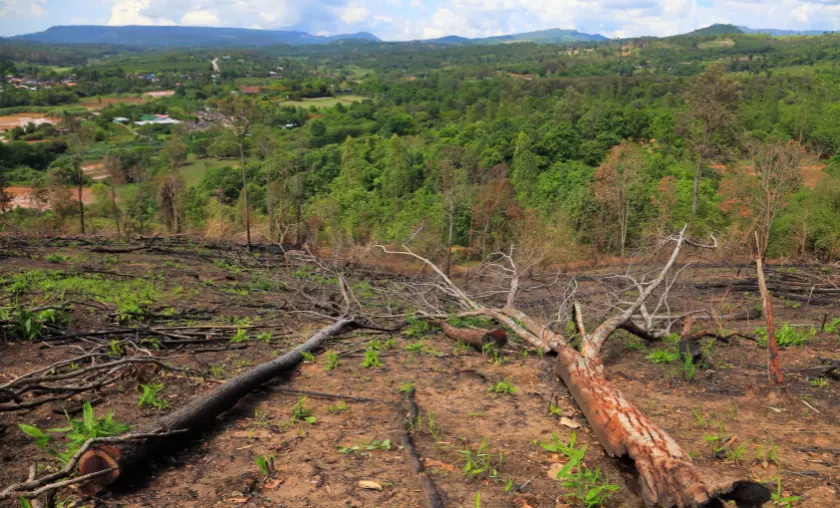
Deforestation for agriculture reveals the intricate balance between expanding farmland and ecological preservation. By clearing forests for cultivation, carbon stored in trees is released, exacerbating climate change. This phenomenon not only disrupts ecosystems but also impacts biodiversity and compromises the resilience of local environments.
Examining the ramifications of deforestation underscores the importance of sustainable land management practices that harmonize food production with the imperative to safeguard forests as valuable carbon sinks and vital components of our planet’s health.
Examining How Clearing Land for Crops Affects Ecosystems
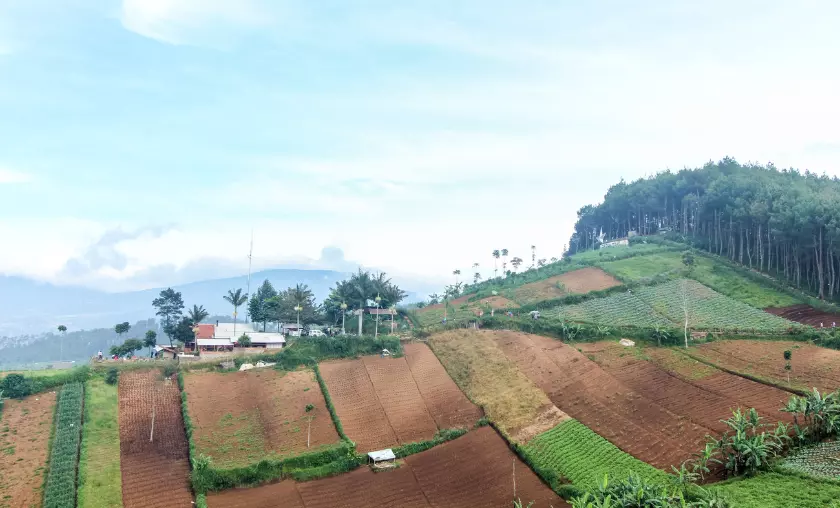
When forests are converted into agricultural land, intricate habitats are disrupted, leading to habitat loss and diminished biodiversity. This process not only disturbs delicate ecological balances but also releases stored carbon, contributing to global warming.
- Habitat Loss: Clearing land for crops leads to the destruction of natural habitats, displacing diverse plant and animal species.
- Biodiversity Impact: Ecosystems that undergo land conversion experience a reduction in species diversity, affecting the delicate balance of flora and fauna.
- Carbon Release: Trees store carbon dioxide, and when cleared, this stored carbon is released into the atmosphere, contributing to greenhouse gas emissions.
- Soil Degradation: Deforestation disrupts soil structure and nutrient cycling, diminishing soil quality and fertility over time.
- Climate Change Amplification: The combination of carbon release and reduced vegetation cover intensifies climate change impacts, including altered precipitation patterns and temperature extremes.
Understanding the multifaceted impacts of land clearance prompts us to seek more sustainable agricultural methods that minimize disruption to ecosystems and prioritize the preservation of biodiversity for the overall health of the planet.
Water Scarcity & Food Production
Connection Between Water Scarcity & Food Production
Water scarcity and food production are intricately linked, highlighting water’s critical role in sustaining agriculture. As global populations rise and demand for food increases, agricultural activities consume substantial amounts of water, placing stress on freshwater resources.
By examining the impact of water scarcity on different regions, the discussion underscores the urgency of adopting efficient irrigation methods, implementing water management strategies, and promoting sustainable agricultural practices that ensure both food security and the responsible use of water resources.
Relationship Between Irrigation & Depleted Water Resources
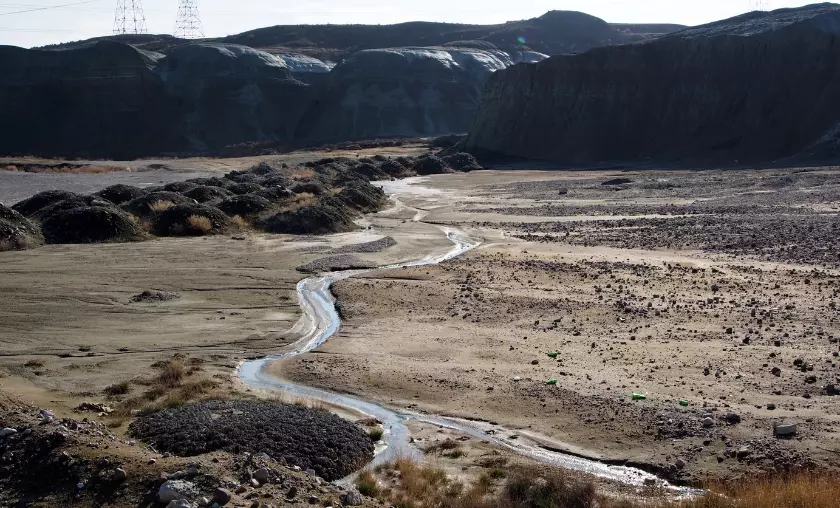
The relationship between irrigation and depleted water resources highlights a significant challenge in modern agriculture. While irrigation is crucial for enhancing crop yields and ensuring food production, inefficient water management can lead to overextraction and depletion of water sources.
The intricate balance between providing adequate hydration for crops and safeguarding water availability for communities and ecosystems requires careful consideration.
Biodiversity Loss
Biodiversity Loss: Impacts on Ecosystems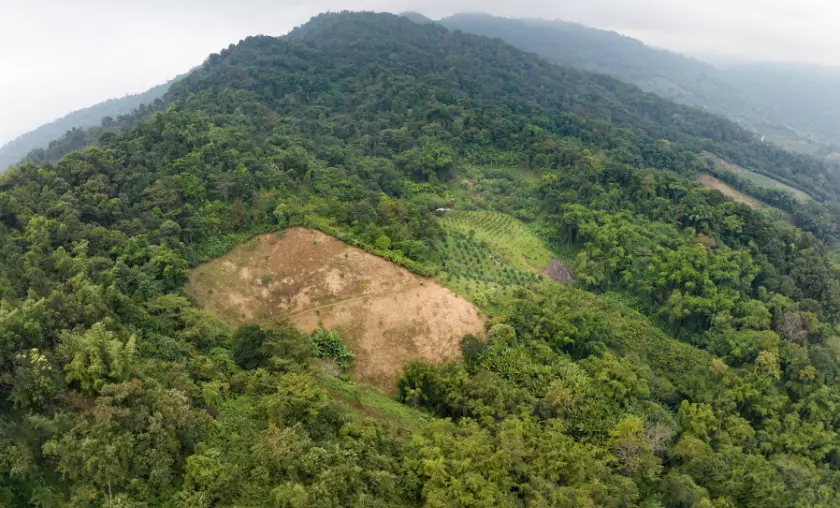
Biodiversity loss is a pressing environmental concern that underscores the interconnectedness of all life forms. As ecosystems are altered by factors such as deforestation, pollution, and climate change, the delicate balance that sustains diverse plant and animal species is disrupted. This loss impacts the intrinsic value of species and threatens the resilience of ecosystems that provide essential services like pollination, soil fertility, and disease control.
Impacts on Ecosystems Include:
How Monoculture Farming Threatens Biodiversity
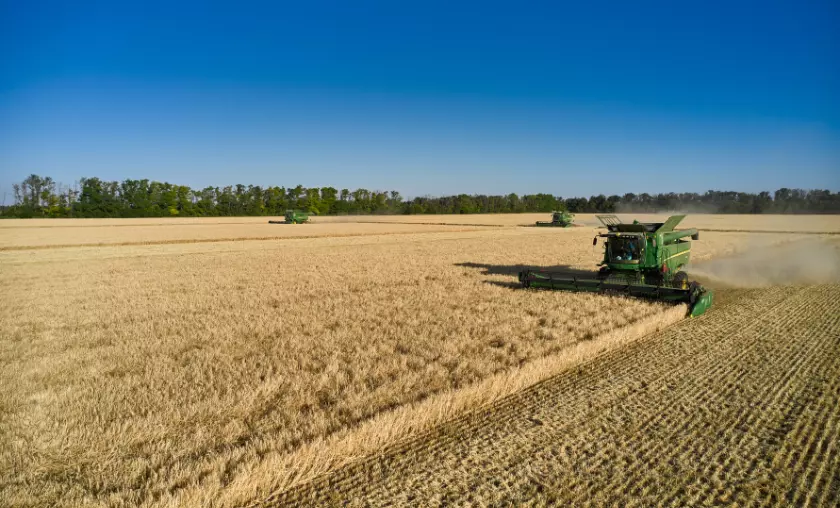
Monoculture farming, characterized by the cultivation of a single crop over large areas, poses a significant threat to biodiversity. The practice simplifies landscapes, eradicating natural habitats and reducing the variety of plants and organisms that thrive in diverse ecosystems.
This lack of diversity makes crops more susceptible to pests, diseases, and environmental changes. By focusing on a single crop, monoculture farming often leads to the overuse of pesticides and fertilizers, negatively impacting soil health and water quality.
Food Waste
Food Waste: A Drain on Resources and the Environment
Food waste is a global concern that highlights our food systems’ inefficiencies and their impact on the environment. As significant amounts of edible food are discarded at various production, distribution, and consumption stages, valuable resources such as water, energy, and land are squandered. Moreover, decomposing food waste in landfills generates methane, a potent greenhouse gas that contributes to climate change.
Investigating the Environmental Toll of Discarded Food
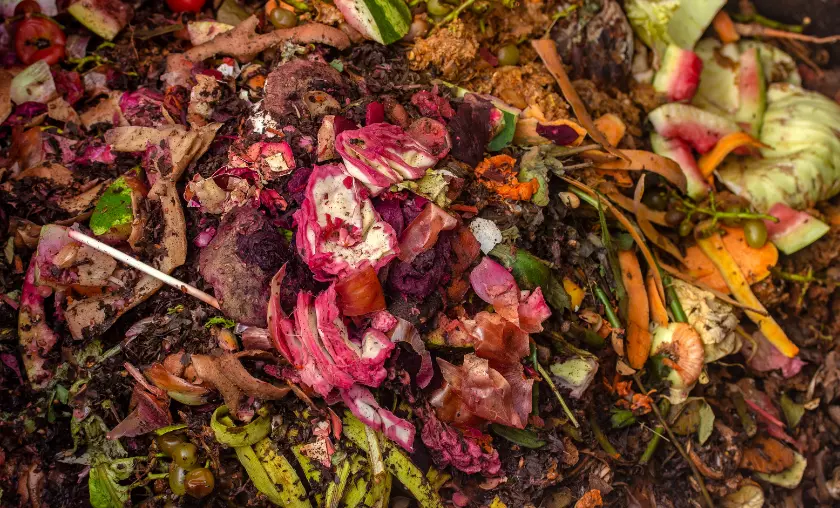
Investigating the environmental toll of discarded food reveals the significant impact of food waste on our planet’s health. The discarded food represents the wastage of valuable resources like water, land, and energy used in production and contributes to greenhouse gas emissions when it decomposes in landfills.
By understanding the far-reaching implications of discarded food, the discussion emphasizes the urgency of adopting strategies to reduce waste, from improved supply chain management to encouraging responsible consumer behaviors.
Sustainable Farming Practices
Sustainable Farming Practices: Mitigating Impact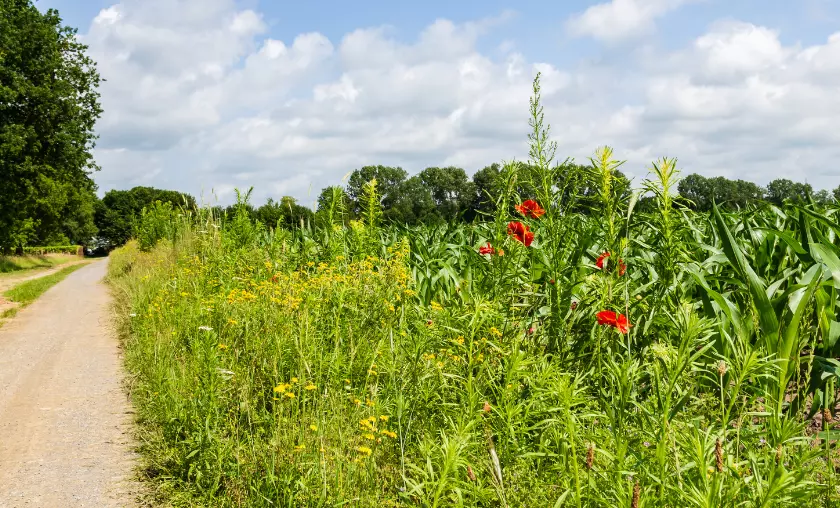
Sustainable farming practices encompass a range of methods to maintain our ecosystems’ equilibrium while ensuring food production for future generations. These practices prioritize soil health through techniques like crop rotation and cover cropping, minimizing the need for synthetic fertilizers and pesticides.
Embracing agroforestry and integrated pest management further reduces environmental impact. Water efficiency is achieved through drip irrigation and rainwater harvesting, conserving this vital resource.
Strategies for Reducing Agricultural Footprints

By embracing these strategies, we can pave the way for a more sustainable and efficient agricultural system that nourishes both people and the planet.
Transportation & Food Miles
Transportation & Food Miles: Meals on the Road
Transportation and food miles refer to the distance that food travels from where it’s produced to where it’s consumed. This concept highlights the environmental impact of long-distance transportation on our food system.
As global supply chains have expanded, the distance food travels has increased, leading to higher carbon emissions, increased energy consumption, and greater dependence on fossil fuels.
Reducing food miles involves supporting local and regional food production, which cuts down on greenhouse gas emissions and strengthens local economies and promotes fresher, more nutritious produce.
The Environmental Consequences of Food Shipping

The shipping of food across long distances carries significant environmental consequences. Freight transportation, often reliant on fossil fuels, contributes to air pollution, greenhouse gas emissions, and global climate change.
Shipping vessels can release pollutants into water bodies, impacting marine ecosystems. Additionally, the energy-intensive nature of long-haul transportation contributes to resource depletion and exacerbates environmental degradation.
Plant-Based Diets
Plant-Based Diets: A Green Alternative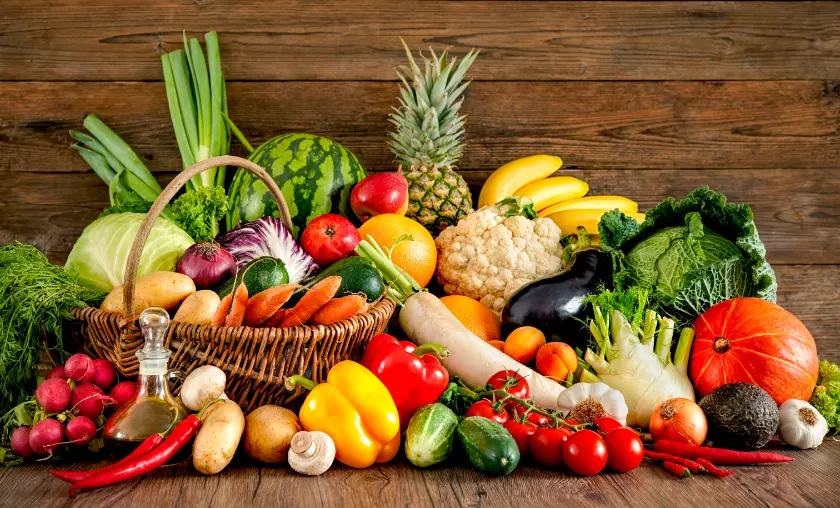
Plant-based diets offer a sustainable and environmentally conscious alternative to traditional meat-centric diets. By primarily focusing on fruits, vegetables, grains, legumes, and nuts, plant-based diets have a lower carbon footprint and reduce pressure on land and water resources.
Livestock farming for meat production is a significant contributor to greenhouse gas emissions, deforestation, and water pollution. Shifting towards plant-based diets reduces these negative impacts, supports biodiversity, and decreases the demand for land-intensive animal agriculture.
- Lower Greenhouse Gas Emissions: The production of meat, especially beef and lamb, generates substantial greenhouse gas emissions. Individuals can help reduce their carbon footprint by consuming less meat and contributing to the fight against climate change.
- Reduced Deforestation: Much of the world’s deforestation is driven by the expansion of livestock grazing and feed crop cultivation. Consuming less meat reduces the demand for these practices, which helps preserve vital forest ecosystems and their biodiversity.
- Water Conservation: Meat production requires significant amounts of water for animal rearing and feed crops. Opting for plant-based foods can help conserve water resources and alleviate pressure on increasingly scarce freshwater supplies.
- Preservation of Land and Habitats: Reduced meat consumption lessens the need for vast areas of land for grazing and feed crops, allowing for the preservation of natural habitats and the protection of endangered species.
- Mitigation of Pollution: Livestock farming contributes to water and air pollution through the release of waste and emissions. A shift to plant-based diets can alleviate these pollution sources, leading to cleaner waterways and improved air quality.
Future Sustainability
Future Sustainability: Shaping a Greener Food System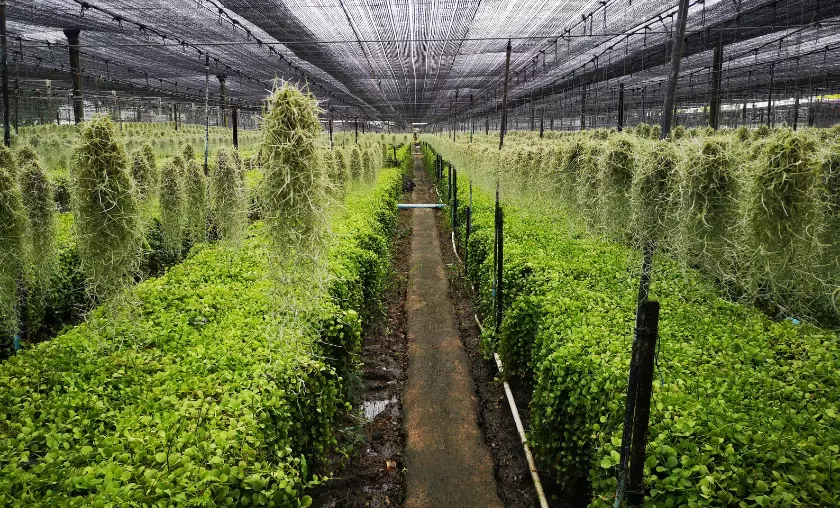
Future sustainability hinges on the transformation of our food system towards greater ecological harmony. This entails embracing innovative agricultural practices that prioritize soil health, water efficiency, and biodiversity conservation. Promoting local and seasonal consumption, reducing food waste, and adopting plant-based diets are integral components.
How Policies & Consumer Choices Will Impact the Planet

Envisioning the future requires a dual consideration of policies and consumer choices, recognizing their combined impact on the planet. Thoughtful policies that incentivize sustainable farming, reduce food waste, and promote renewable energy can drive systemic change. Simultaneously, consumer choices, such as opting for local and plant-based foods, contribute to a collective shift towards a greener lifestyle.
Conclusion
In The Symphony of Food, “Environmental Impact of Food” is a powerful melody reflecting the complicated relationship between our plates and our planet. Exploring these impacts reminds us that every bite leaves a profound environmental footprint, and challenges us to balance our cravings through conscious choices.
As we scrutinize the impact of food production on resources and ecosystems, a call for sustainable practices is sounding, urging us to minimize waste, eat a plant-based diet, and support regenerative agriculture. Amid these challenges, innovative solutions that balance food and nature are on the horizon.
Through mindful consumption, we become stewards of a greener future, where every bite means not only satiety, but also reverence for the fragile world that feeds us.
FAQ’s
How Can Consumers Make More Environmentally Friendly Food Choices?
Consumers can make environmentally friendly choices by opting for locally sourced, organic, and seasonal foods. Reducing meat and dairy consumption, supporting sustainable farming practices, and minimizing food waste are also effective strategies.
What Role Does Food Waste Play in the Environmental Impact of Food?
Food waste exacerbates the environmental impact of food. When food is wasted, the resources used to produce it, including water, energy, and land, are also wasted. Minimizing food waste is essential for reducing the overall environmental burden.
Can Changing Eating Habits Help Reduce the Environmental Impact of Food?
Yes, changing eating habits can play a significant role. Transitioning to plant-based diets, reducing meat consumption, and embracing foods with lower resource requirements can collectively lower the environmental impact of our diets.
How Does Agriculture Contribute to the Environmental Impact of Food?
Agriculture contributes significantly to the environmental impact of food through factors like deforestation, water usage, greenhouse gas emissions, and pesticide use associated with conventional farming practices.
Are All Types of Food Equally Harmful to the Environment?
No, not all types of food have the same environmental impact. Animal-based products tend to have a larger environmental footprint compared to plant-based foods due to the resources required for animal farming.
To Read More Similar Articles, Click Here.
Thanks for Visiting Our Website. If You Appreciate Our Work, Kindly Show Us Some Support in Our Comments Section 🙂


